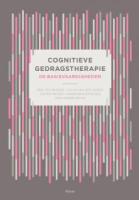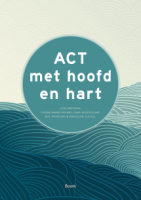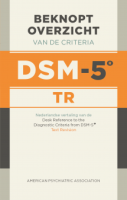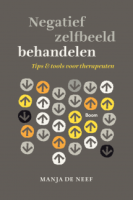Inhoud
Kinderen en ouders profiteren van kindgerichte CGT bij angststoornissen
Samenvatting
Samenvatting:
Er is overtuigend bewijs dat angststoornissen bij kinderen en adolescenten effectief behandeld kunnen worden met cognitieve gedragstherapie (CGT). CGT werkt goed voor een meerderheid van kinderen en jongeren met overmatige angsten. In Nederland zijn verschillende behandelprogramma''s beschikbaar die getoetst zijn op effectiviteit. Deze programma''s richten zich voornamelijk op het kind, en in mindere mate op het gezin, terwijl bekend is dat angstklachten vaak bij meerdere gezinsleden voorkomen. Het ontstaan en voortbestaan van overmatige angst bij kinderen hangt samen met angst en depressie bij hun ouders en met opvoedingsstijl, zoals overmatige controle en (in mindere mate) afwijzing. Het is dan ook niet verwonderlijk dat angst en depressie bij ouders, en opvoedingsstijl van ouders, een minder gunstig behandelresultaat voorspellen. Desondanks wijst onderzoek stelselmatig uit dat het betrekken van ouders als co-client of als co-therapeut in het algemeen niet tot de gewenste grotere behandeleffecten leidt. Het is dan ook opmerkelijk dat ouders stelselmatig verbeteren op eigen angst en dat hun opvoedingsstijl minder controlerend of negatief wordt na behandeling van het kind, ook wanneer daar niet expliciet aandacht voor is in de behandeling. De resultaten van recente studies suggereren dat een verbetering in angst van het kind vooraf gaat aan een verandering van angstklachten van ouders. Verbeteringen in opvoedingsstijl gingen in één studie vooraf aan verbetering van angst bij het kind en kwamen in een andere studie juist ná een daling van de angstklachten van het kind. Psycho-educatie aan ouders blijkt wel een belangrijk ingrediënt van succesvolle behandelingen. Wij concluderen dat ouders belangrijke medestanders zijn bij CGT voor angstige kinderen, maar dat de focus van behandeling op het kind en niet op de ouders zou moeten liggen.
Literatuur
- Achenbach, T.M. (1991). Manual for the Child Behavior Checklist 4–18 and 1991 profile.
- Burlington: University of Vermont, Department of Psychiatry.
- Berman, S.L., Weems, C.F., Silverman, W.K., & Kurtines, W.M. (2000). Predictors of outcome in exposure-based cognitive and behavioral treatments for phobic and anxiety disorders in children. Behavior Therapy, 31, 713-731.
- Bodden, D.H.M. (2008). Ouders van angstige kinderen: Laat ze maar thuis! Kind en Adolescent, 29, 116-119.
- Bodden, D.H.M., Bögels, S.M., Nauta, M.H., Haan, E. de, Ringrose, J., Appelboom, C., Brinkman, A.G., & Appelboom-Geerts, K.C.M.M. (2008). Child versus family cognitivebehavioral therapy in clinically anxious youth: An efficacy and partial effectiveness study. Journal of the American Academy of Child and Adolescent Psychiatry, 47, 13841394.
- Boer, F. (2008). Gooi de ouders niet weg met het badwater! Reactie op Bodden. Kind en Adolescent, 29, 119-121.
- Bögels, S.M., & Brechman-Toussaint, M. (2006). Family issues in child anxiety: Attachment, family functioning, parental rearing and beliefs. Clinical Psychology Review, 26, 834-856.
- Breinholst, S., Esbjørn, B.H., Reinholdt-Dunne, M., & Stallard, P. (2012). cbt for the treatment of child anxiety disorders: A review of why parental involvement has not enhanced outcomes. Journal of Anxiety Disorders, 26, 416-424.
- Chorpita, B.F., & Daleiden, E.L. (2009). Mapping evidence-based treatments for children and adolescents: Application of the distillation and matching model to 615 treatments from 322 randomized trials. Journal of Consulting and Clinical Psychology, 77, 566-579.
- Cobham, V.E., Dadds, M.R., & Spence, S.H. (1998). The role of parental anxiety in the treatment of childhood anxiety. Journal of Consulting and Clinical Psychology, 66, 893-905.
- Cobham, V.E., Dadds, M.R., Spence, S.H., & McDermott, B. (2010). Parental anxiety in the treatment of childhood anxiety: A different story three years later. Journal of Clinical Child and Adolescent Psychology, 39, 410-420.
- Cooper, P.J., Fearn, V., Willetts, L., Seabrook, H., & Parkinson, M. (2006). Affective disorder in the parents of a clinic sample of children with anxiety disorders. Journal of Affective Disorders, 93, 205-212.
- Cooper, P.J., Gallop, C., Willetts, L., & Creswell, C. (2008). Treatment response in child anxiety is differentially related to the form of maternal anxiety disorder. Behavioural and Cognitive Psychotherapy, 36, 41-48.
- Crawford, A.M., & Manassis, K. (2001). Familial predictors of treatment outcome in childhood anxiety disorders. Journal of the American Academy of Child & Adolescent Psychiatry, 40, 1182-1189.
- Creswell, C., Willetts, L., Murray, L., Singhal, M., & Cooper, P. (2008). Treatment of child anxiety: An exploratory study of the role of maternal anxiety and behaviours in treatment outcome. Clinical Psychology & Psychotherapy, 15, 38-44.
- Derogatis, L.R. (1983). SCL-90-R administration and scoring procedures manual II. Towson, MD: Clinical Psychometrics Research.
- Epstein, N.B., Baldwin, L.M., & Bishop, D.S. (1983). The McMaster family assessment device. Journal of Marital and Family Therapy, 9, 171–180.
- Festen, H., Hartman, C.A., Hogendoorn, S.M., Haan, E. de, Prins, P.J.M., Reichart, C.G., Moorlag, H., Nauta, M.H. (2013). Temperament and parenting predicting anxiety change in cognitive behavioral therapy: The role of mothers, fathers and children. Journal of Anxiety Disorders, 27, 289-297.
- In-Albon, T., & Schneider, S. (2006). Psychotherapy of childhood anxiety disorders: A meta-analysis. Psychotherapy and Psychosomatics, 76, 15-24.
- Kendall, P.C., & Hedtke, K.A. (2006). Cognitive-behavioral therapy for anxious children: Therapist manual (3rd ed.). Ardmore, PA: Workbook.
- Kendall, P.C., Hudson, J.L., Gosch, E., Flannery-Schroeder, E., & Suveg, C. (2008). Cognitive behavioral therapy for anxiety disordered youth: A randomized clinical trial evaluating child and family modalities. Journal of Consulting and Clinical Psychology, 76, 282-297.
- Leeden, A.J. van der, van Widenfelt, B.M., Leeden, R. van der, Liber, J.M., Utens, E.M.W.J., & Treffers, P.D.A. (2011). Stepped care cognitive behavioural therapy for children with anxiety disorders: A new treatment approach. Behavioural and Cognitive Psychotherapy, 39, 55-75.
- Leeden, A.J. van der, Widenfelt, B.M., Leeden, R. van der, Liber, J.M., Utens, E.M., & Treffers, P.D.A. (2013). Changes in parenting and parental anxiety, depression, and stress during stepped care cognitive behavior therapy for childhood anxiety disorders. Unpublished manuscript.
- Legerstee, J.S., Huizink, A.C., Gastel, W. van, Liber, J.M., Treffers, P.D., Verhulst, F.C., & Utens, E. (2008). Maternal anxiety predicts favourable treatment outcomes in anxiety-disordered adolescents. Acta Psychiatrica Scandinavia, 117, 289-298.
- Liber, J.M., Widenfelt, B.M. van, Goedhart, A.W., Utens, E.M.W.J., Leeden, A. van der, Markus, M.T., & Treffers, P.D.A. (2008). Parenting and parental anxiety and depression as predictors of treatment outcome for childhood anxiety disorders: Has the role of fathers been underestimated? Journal of Clinical Child and Adolescent Psychology, 37, 747-758.
- Liber, J.M., Van Widenfelt, B.M., Utens, E.M.W. J., Ferdinand, R.F., Leeden, A. van der, van Gastel, W., & Treffers, P.D.A. (2008). No differences between group versus individual treatment of childhood anxiety disorders in a randomised clinical trial. Journal of Child Psychology and Psychiatry, 49, 886-893.
- McLeod, B.D., Wood, J.J., & Weisz, J.R. (2007). Examining the association between parenting and childhood anxiety: A meta-analysis. Clinical Psychology Review, 27, 155-172.
- Meurs, I. van, Reef, J., Verhulst, F.C., & Ende, J. van der (2009). Intergenerational transmission of child problem behaviors: A longitudinal, population-based study. Journal of the American Academy of Child & Adolescent Psychiatry, 48, 138-145.Micco, J.A., Henin, A., Mick, E., Kim, S., Hopkins, C., Biederman, J., & Hirshfeld-Becker, D.R. (2009).
- Anxiety and depressive disorders in offspring at high risk for anxiety: A meta-analysis. Journal of Anxiety Disorders, 23, 1158-1164.
- Nauta, M.H., Scholing, A., Emmelkamp, P.M.G., & Minderaa, R.B. (2003). Cognitive-behavioral therapy for children with anxiety disorders in a clinical setting: No additional effect of a cognitive parent training. Journal of the American Academy of Child and Adolescent Psychiatry, 42, 1270-1278.
- Nock, M.K., & Kazdin, A.E. (2005). Randomized controlled trial of a brief intervention for increasing participation in parent management training. Journal of Consulting and Clinical Psychology, 73, 872-879.
- Podell, J.L., & Kendall, P.C. (2011). Mothers and fathers in family cognitive-behavioral therapy for anxious youth. Journal of Child and Family Studies, 20, 182-195.
- Prinz, R.J., Foster, S.L., Kent, R.N., & O'Leary, D.K. (1979). Multivariate assessment of conflict in distressed and nondistressed mother–adolescent dyads. Journal of Applied Behavior Analysis, 12, 691–700.
- Rapee, R.M. (2000). Group treatment of children with anxiety disorders: Outcome and predictors of treatment response. Australian Journal of Psychology, 52, 125-130.
- Schuldermann, S., & Schuldermann, E. (1988). Questionnaire for Children and Youth (crpbi–30). Unpublished manuscript, University of Manitoba, Winnipeg, Canada.
- Settipani, C.A., O'Neil, K.A., Podell, J.L., Beidas, R.S., & Kendall, P.C. (2013). Youth anxiety and parent factors over time: Directionality of change among youth treated for anxiety. Journal of Clinical Child and Adolescent Psychology, 42, 9-21.
- Silverman, W.K., & Albano, A.M. (1996). Anxiety Disorders InterviewSchedule for DSM–IV: Child and parent versions. New York: Oxford University Press.
- Silverman, W.K., Kurtines, W.M., Jaccard, J., & Pina, A.A. (2009). Directionality of change in youth anxiety treatment involving parents: An initial examination. Journal of Consulting and Clinical Psychology, 77, 474-485.
- Silverman, W.K., Pina, A.A., & Viswesvaran, C. (2008). Evidence-based psychosocial treatments for phobic and anxiety disorders in children and adolescents. Journal of Clinical Child and Adolescent Psychology, 37, 105-130.
- Southam-Gerow, M., Kendall, P.C., & Weersing, V.R. (2001). Examining outcome variability: Correlates of treatment response in a child and adolescent anxiety clinic. Journal of Clinical Child Psychology, 30, 422-436.
- Spielberger, C. D. (1983). Manual for the state-trait anxiety inventory (stai). Palo Alto, CA: Consulting Psychologists Press.
- Waters, A.M., Ford, L.A., Wharton, T.A., & Cobham, V.E. (2009). Cognitive-behavioural therapy for young children with anxiety disorders: Comparison of a child + parent condition versus a parent only condition. Behaviour Research and Therapy, 47, 654662.
- Weissman, M.M., Wickramaratne, P., Nomura, Y., Warner, V., Pilowsky, D., & Verdeli, H. (2006). Offspring of depressed parents: 20 years later. The American Journal of Psychiatry, 163, 1001-1008.
- Weisz, J., Chorpita, B., Palinkas, L., Schoenwald, S., Miranda, J., Bearman, S., Daleiden, E., Ugueto, A., Ho, A., Martin, J., Gray, J., Alleyne, A., Langer, D., Southam-Gerow, M., & Gibbons, R. (2012). Testing standard and modular designs for psychotherapy treating depression, anxiety, and conduct problems in youth: A randomized effectiveness trial. Archives of General Psychiatry, 69, 274-282.
- Wood, J.J., Piacentini, J.C., Southam-Gerow, M., Chu, B.C., & Sigman, M. (2006). Family cognitive behavioral therapy for child anxiety disorders. Journal of the American Academy of Child & Adolescent Psychiatry, 45, 314-321.
- Wood, J.J., McLeod, B.D., Piacentini, J.C., & Sigman, M. (2009). One-year follow-up of family versus child cbt for anxiety disorders: Exploring the roles of child age and parental intrusiveness. Child Psychiatry and Human Development, 40, 301-316.
 © 2009-2025 Uitgeverij Boom Amsterdam
© 2009-2025 Uitgeverij Boom Amsterdam
De artikelen uit de (online)tijdschriften van Uitgeverij Boom zijn auteursrechtelijk beschermd. U kunt er natuurlijk uit citeren (voorzien van een bronvermelding) maar voor reproductie in welke vorm dan ook moet toestemming aan de uitgever worden gevraagd:
Behoudens de in of krachtens de Auteurswet van 1912 gestelde uitzonderingen mag niets uit deze uitgave worden verveelvoudigd, opgeslagen in een geautomatiseerd gegevensbestand, of openbaar gemaakt, in enige vorm of op enige wijze, hetzij elektronisch, mechanisch door fotokopieën, opnamen of enig andere manier, zonder voorafgaande schriftelijke toestemming van de uitgever.
Voor zover het maken van kopieën uit deze uitgave is toegestaan op grond van artikelen 16h t/m 16m Auteurswet 1912 jo. Besluit van 27 november 2002, Stb 575, dient men de daarvoor wettelijk verschuldigde vergoeding te voldoen aan de Stichting Reprorecht te Hoofddorp (postbus 3060, 2130 KB, www.reprorecht.nl) of contact op te nemen met de uitgever voor het treffen van een rechtstreekse regeling in de zin van art. 16l, vijfde lid, Auteurswet 1912.
Voor het overnemen van gedeelte(n) uit deze uitgave in bloemlezingen, readers en andere compilatiewerken (artikel 16, Auteurswet 1912) kan men zich wenden tot de Stichting PRO (Stichting Publicatie- en Reproductierechten, postbus 3060, 2130 KB Hoofddorp, www.cedar.nl/pro).
No part of this book may be reproduced in any way whatsoever without the written permission of the publisher.
Inloggen VGCt en VVGT
Leden van de VGCt en de VVGT loggen in via de site van hun vereniging. Als u op die site bent ingelogd als lid, vindt u daar een button naar het Tijdschrift voor Gedragstherapie.
English
Behavioral Therapy: Journal for Behavioral Therapy and Cognitive Therapy ISSN 0167-7454
Information in English can be found here.







